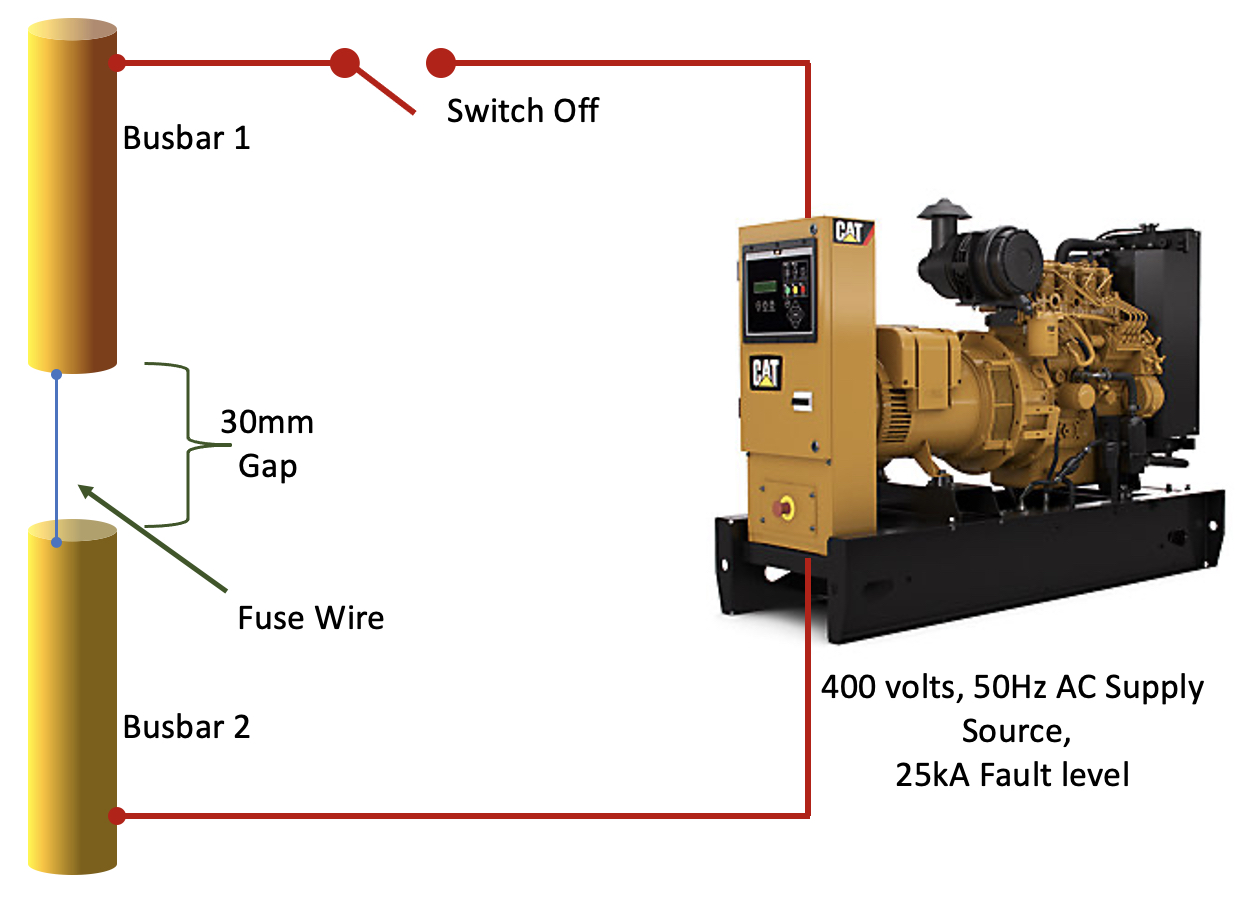What is Arc Flash?
An arc flash is usually caused by inadvertent contact between an energised conductor such as a busbar or wire with another conductor or an earthed surface. When this occurs, the resulting short circuit current can melt the conductors and produce strong magnetic fields that blow the conducting objects apart. The resultant fault current ionises the air and creates a conducting plasma fireball with arc temperatures that can reach upwards of 20,000 degrees centigrade at its centre (four times the surface temperature of the sun), which will vaporize all known materials close to the arc immediately and the incident energy emitted may ignite the worker’s clothing and/or cause body burns to the worker even without igniting the clothing. Severe injury and even death can occur, not only to persons working on the electrical equipment, but also to people located nearby.
2.1 Arc Flash Injury
Arc flash injury can include external burns (i.e., severe burns to the skin), internal burns and intoxication from inhaling hot gases and vaporised metal, hearing damage, eye damage and blindness from the ultraviolet light of the flash, as well as many other devastating injuries. Depending upon the severity of the arc flash, an explosive force known as an arc blast may also occur. This is due to the rapid expansion of air, dispelling a force that may exceed 100 kilopascal (kPa) and could cause the propulsion of molten metal, equipment parts and other debris at speeds of up to 300 metres per second (m/s).
The severity of the thermal effect of an arc flash is defined by the amount of “incident energy” that a victim, standing at a given distance away from the arc, could receive to the skin surface. The “incident energy” is the value calculated which defines the severity of the arc flash. It can be quantified in units of kilojoule/metre2 (kJ/m2), Joule/centimetre2 (J/cm2) and calories/centimetre2 (cal/cm2). One cal/cm2 is equal to 4.184 J/cm2 and is equal to 41.84 kJ/m2. Units of cal/cm2 will be used throughout this guide, since this is the unit, which is specified to be put on the PPE garment labels according to IEC 61482-2.
As a frame of reference for incident energy, an exposure to heat flux of 5.0 J/cm2 (equivalent to 1.2 cal/cm2) during a 1 second exposure can produce the onset of second degree burn to the skin. This value is used by many standards as the benchmark that defines protection against the thermal effects of arc flash and the threshold of a zone which is commonly known as the arc flash boundary. This is where the predicted incident energy is calculated to be 5.0 J/cm2 (1.2 cal/cm2).
2.2 Causes of Arc Flash
The following is a simplified description that I have used many times to explain the phenomena to delegates at seminars and in magazine articles. I find that the ubiquity of the components highlighted strikes a chord to give some practical understanding of the preceding description of the phenomena. As stated earlier, an arc flash is usually caused by inadvertent contact between an energised conductor such as a busbar or wire with another conductor or an earthed surface. Put simply, it is insulation breakdown and very often, the insulation in question on low voltage systems is simply air. Sadly, the cause of insulation breakdown is, very often, human intervention.

Figure 2.1
In Figure 2.1 you can see two copper busbars that are separated by 3 cm air gap. The busbars are connected to an electrical source operating at 400 V, with a prospective short circuit capacity of 25,000 A. This is roughly the type of output that you would get from a 1000 kVA, transformer. As you can see there is no protective device in circuit, only a switch. Connecting the two busbars is a piece of heavy gauge fuse wire.
When I ask electrical workers the question “What will happen when the switch is closed,” they often say that a large amount of current will flow, and the fuse wire will simply rupture and disconnect the circuit.